Status and management of key threats to park ecosystems
State of the Parks Fourth Edition
Park ecosystems can be impacted by a wide range of threatening process including weed invasion, predation, overgrazing, lack of connectivity, impacts of increasing visitation and pollution. Climate change is one of the largest threats to Victoria’s natural environments and the species that inhabit them. The impacts of climate change are not considered separately in this report but are included under the relevant threating processes (for example extreme weather, inappropriate water regime and inappropriate fire regime). In managing threats, park managers seek to minimise processes that have the greatest negative impact on the most significant conservation values.
Management objectives for key threats include prevention, eradication of new and emerging populations, containment or control of established threats to protect priority conservation values, and working with other land managers to control threats to economic values on adjacent land.
Indicators
Status and trend of key threats in parks
Management response to key threats in parks
Extent management objectives met for key threats in parks
Data confidence
Status and trend of key threats in parks
Impact of key threats on conservation values in parks
- Based on park manager assessments, the most commonly reported threats to nature conservation values were weeds and pest animals.
- The percentage of parks where key threats were an extreme or major impact ranged from 14% to 26% of relevant parks.
- The impact of key threats on natural values has remained stable since 2013.
- Although Feral horses were established in only two parks across the estate, Alpine National Park and Barmah National Park, in both cases park managers reported that their impact on park values was major.

*Assessments were optional for all non-National Parks Act parks. **Calculated from parks that were assessed in both 2013 and 2018 (Weeds, n = 233 parks; Pest animals, n = 181 parks; Inappropriate water regimes, n = 79 parks; Non-compliance, n = 142 parks; Visitor impacts, n = 133 parks; Fire, n = 114 parks; Marine pests, n = 18 parks), excluding parks where impact was unknown. 2013 data not available for dieback and over-abundant native animals.
Data source: Parks Victoria State of the Parks assessments


Response to this question was optional.

Response to this question was optional.
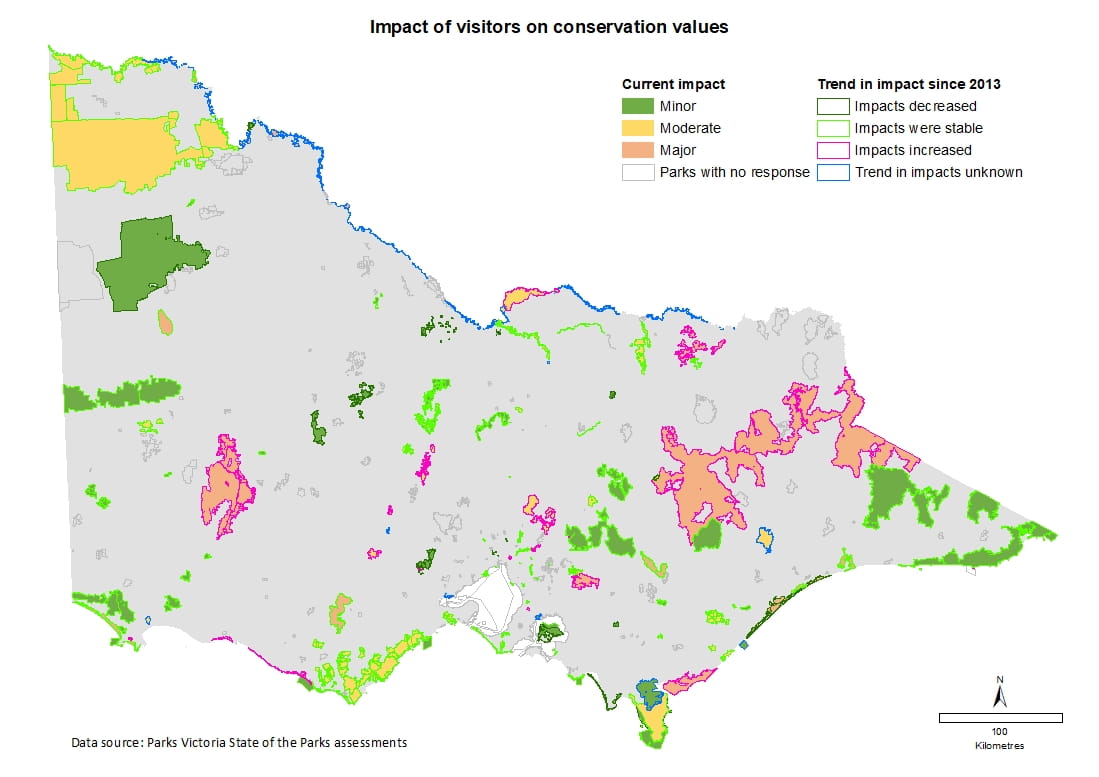
Response to this question was optional.




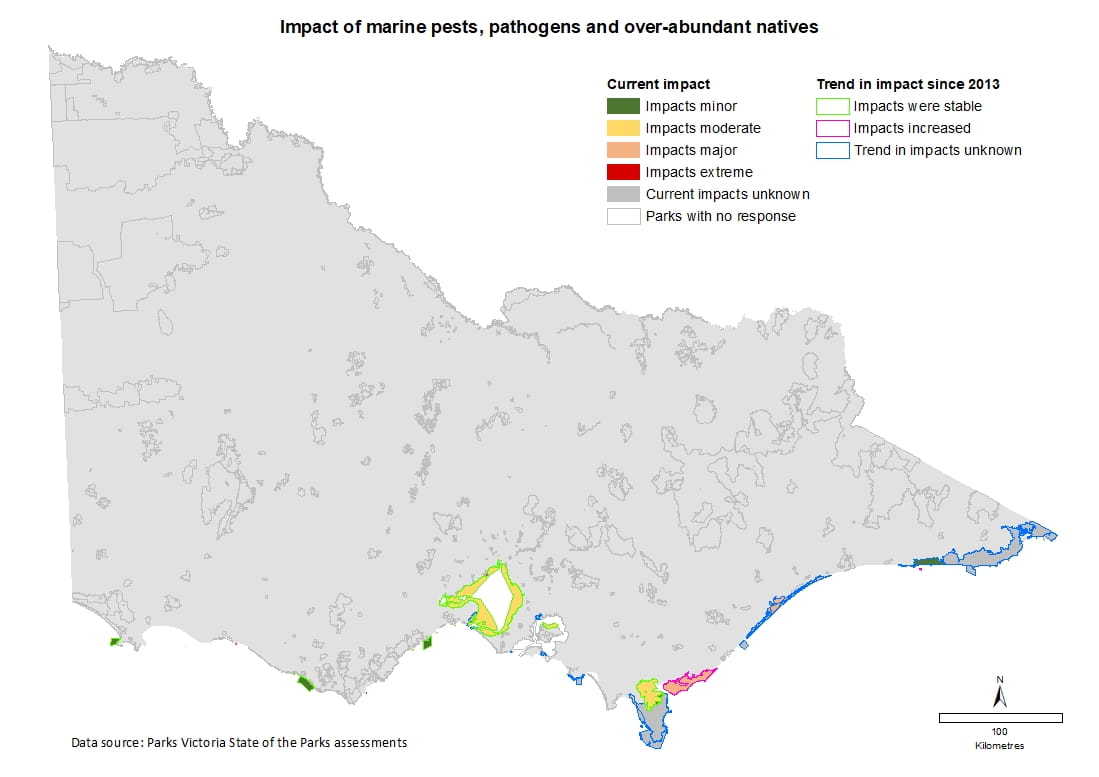
Ratio of weeds to native flora in Victorian national parks
- The proportion of weed species to total native flora species is one indicator of the potential impact of weeds in parks.
Parks with the highest and lowest ratio of weeds to native flora

Data source: Parks Victoria and Department of Energy, Environment and Climate Action (DEECA)

Impact of individual pest animals in parks
- Foxes, rabbits and cats are affecting the greatest number of parks.
- The impacts of these species have remained stable since 2013.

*Calculated from parks that were assessed in both 2013 and 2018 (Red foxes, n = 139; European rabbits, n = 108; Cats, n = 67; Sambar deer, n = 35; Pigs, n = 27; Goats, n = 31; Fallow deer, n = 24; Dogs, n = 24), excluding parks where impact was unknown.
Data source: Parks Victoria State of the Parks assessments
Management response to key threats in parks
- Across the Victorian parks network, weed and pest animal control are the most common conservation activities employed by park management.
- The total area of weed control varied during the reporting period in line with fluctuations in initiative funding. Reporting in the 2014-15 year was incomplete.
- The overall area treated for pest animals varied between 2014-15 and 2017-18. Variations are largely due to intermittent large-scale treatment of Goats, and smaller changes in the area treated for Red Foxes and European Rabbits.
Area (ha) treated for weeds

Data source: Parks Victoria Environmental Information System and DEECA
Area (ha) treated for pest animals (by species)

Data source Parks Victoria Environmental Information System and DEECA
Extent management objectives met for key threats in parks
Parks Victoria manages threats in several ways, including prevention, eradication, containment and asset protection. The extent to which management objectives can be met is due to a range of factors including available control methods, drivers such as climate and available resources and skills.
Extent to which management objectives for key threats were met
- Park managers reported that the extent to which management objectives for key threats to park values were met varied across threats with objectives being fully or substantially met in 13% – 31% of relevant parks.
- The extent to which management objectives were met for fire, inappropriate water regimes and marine pests, pathogens and over-abundant natives has remained stable since 2013. However, the extent to which management objectives were met for weeds, pest animals, visitor impacts, and non-compliance decreased. Although the trend was stable for between 57% and 70% of relevant parks across these threats, significantly more parks reported that it had declined (between 21% and 33% of relevant parks) than improved (between 8% and 11% of relevant parks).
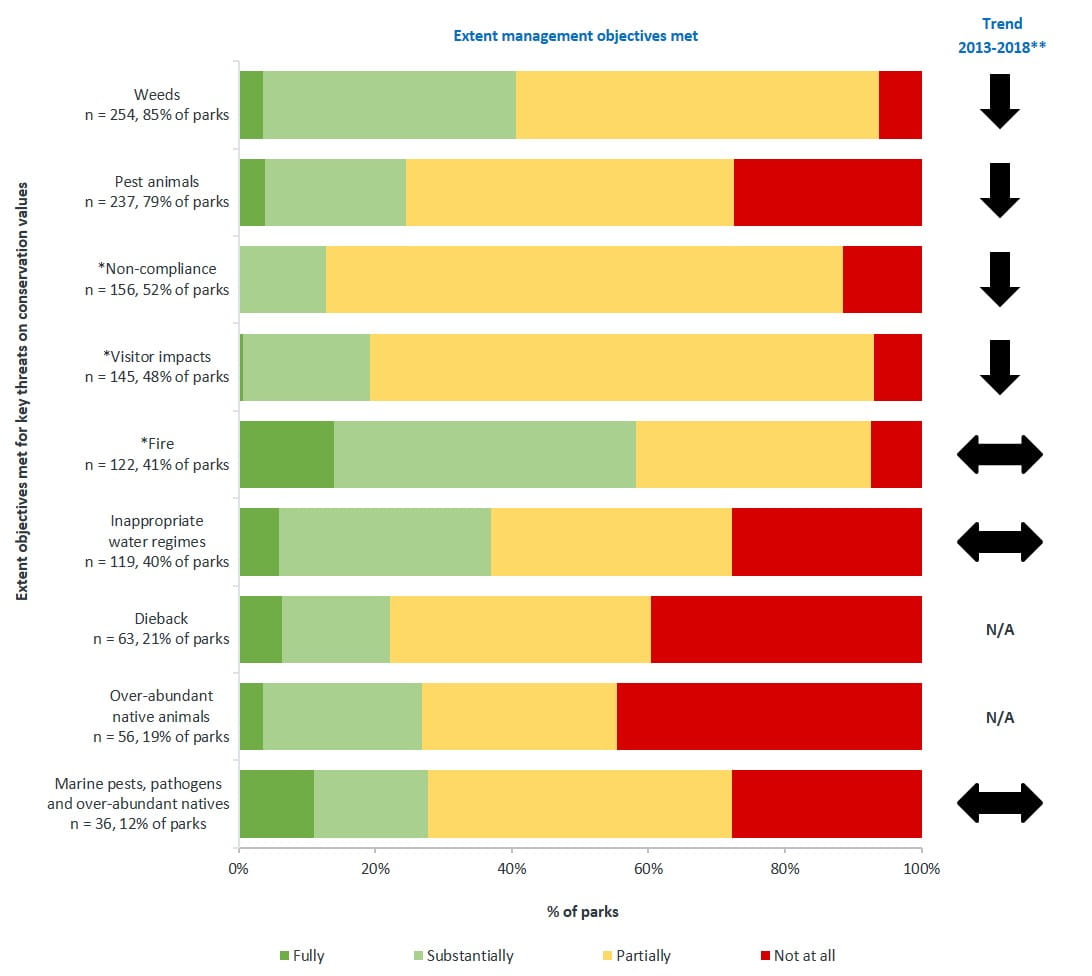
*This assessment was optional for non-National Parks Act parks. **Calculated from parks that were assessed in both 2013 and 2018 (Weeds, n = 244; Pest animals, n = 226; Non-compliance, n = 142; Visitor impacts, n = 133; Fire, n = 114; Inappropriate water regimes, n = 103; Marine pests, n = 34). Only data for 2018 was available for dieback and over-abundant native animals.
Data source: Parks Victoria State of the Parks assessments


Response to this question was optional.

Response to this question was optional.

Response to this question was optional.



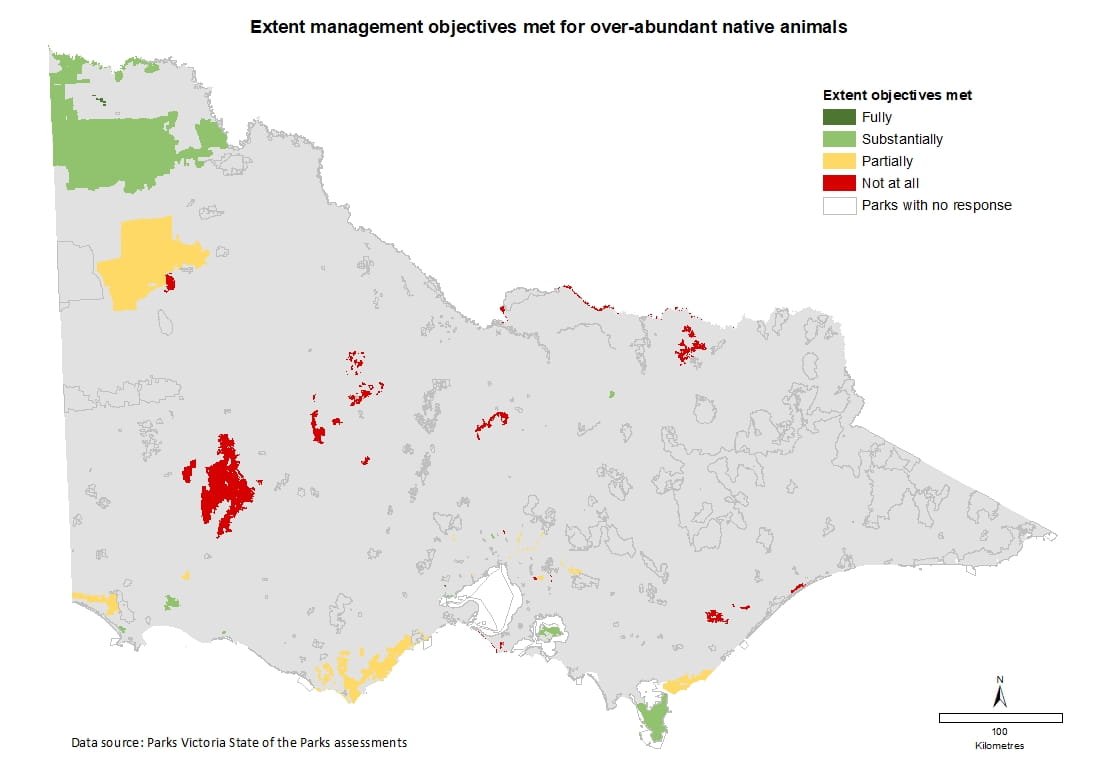
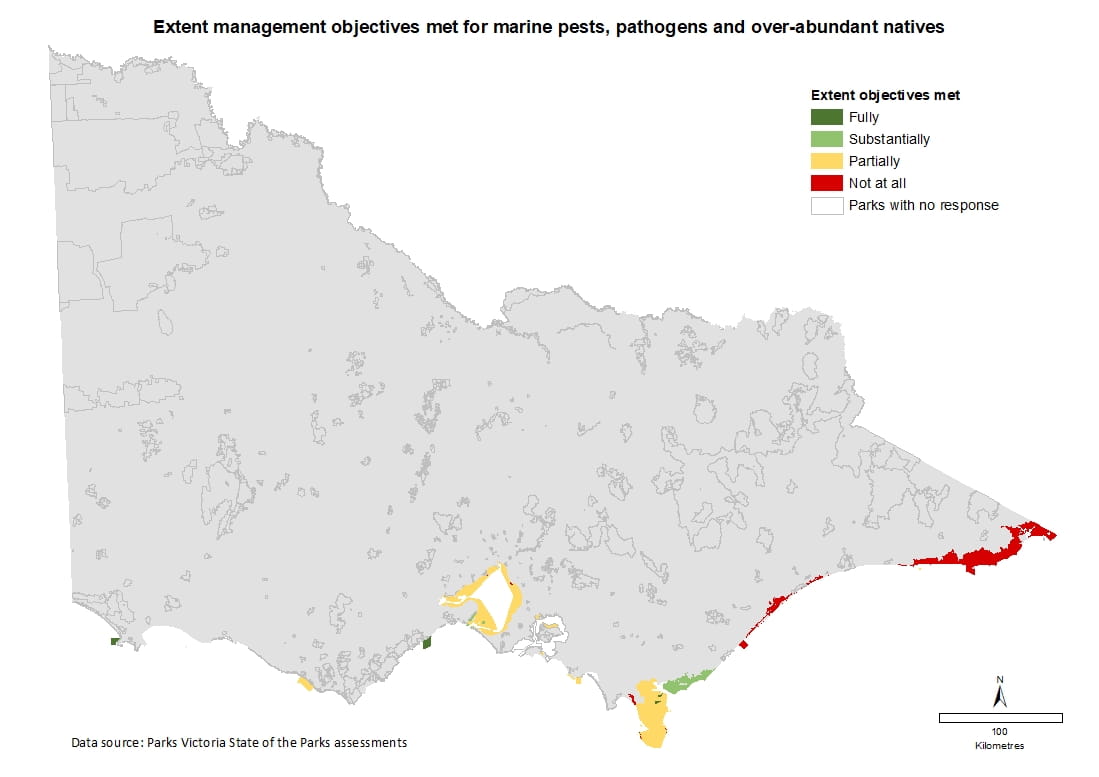
Confidence in park manager assessments for impact and extent objectives met for key threats

Data source: Parks Victoria State of the Parks assessments
Go to previous section of State of the Parks Fourth Edition: Extent and representation of natural assets in parks
Go to next section of State of the Parks Fourth Edition: Condition of park ecosystems

